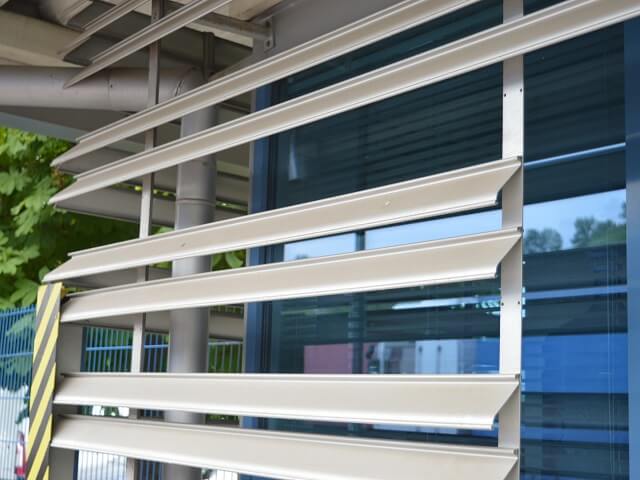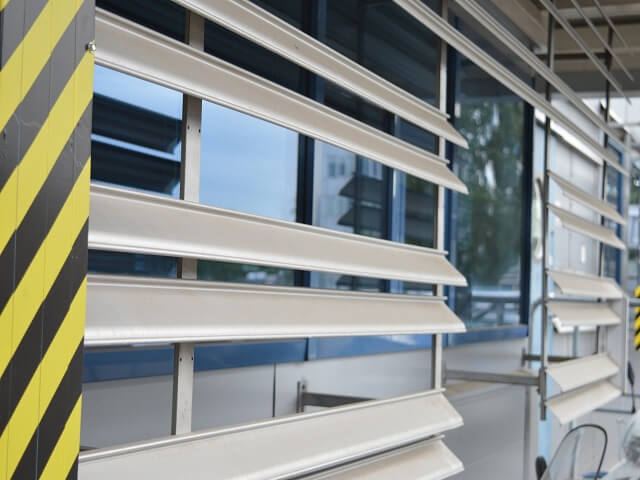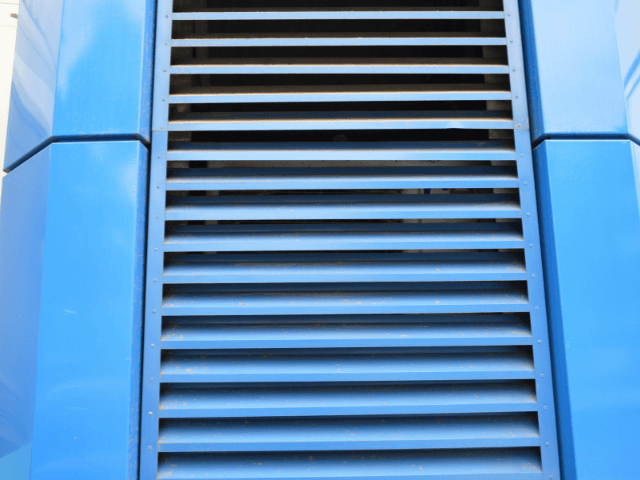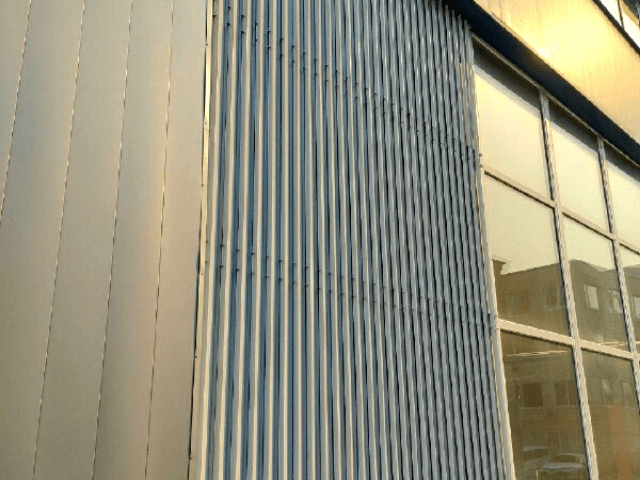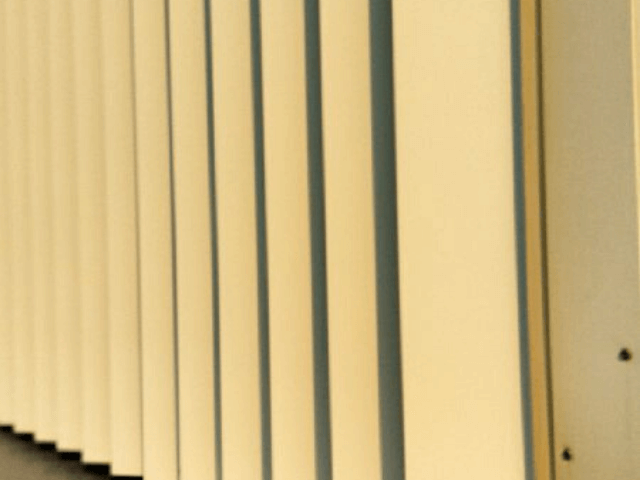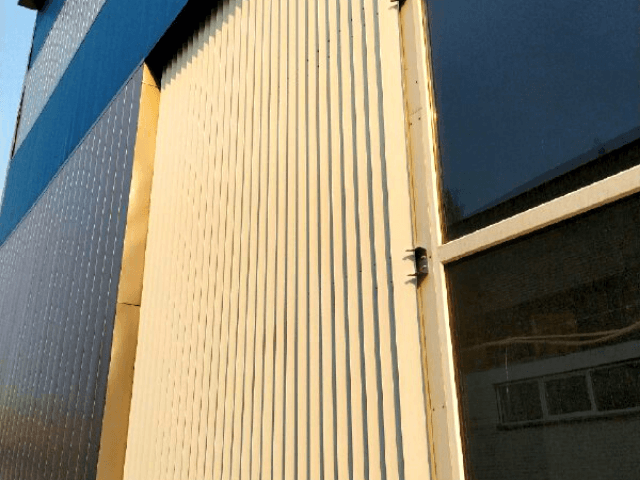Blinds Facade as a Solution for Ventilation Outlets
When decorating buildings with a large area, there is complexity in embellishing ventilation outlets. While in the case of roofing structures, it can be resolved quite easily, decorating wall air intakes and similar systems may require significant investments and labor.
One of the most popular recent solutions is the installation of ventilated blinds facade panels. They possess sufficient strength and resistance to external factors while not obstructing ventilation. A brief overview of the practice of using blinds panels in air duct decoration will be discussed in our article.
Ventilation Outlets: Basic Requirements for Decoration
Ventilation outlets are used for air intake or the expulsion of exhaust air from ventilation passages within the premises. In large buildings, such as commercial or industrial facilities, warehouses, and residential multi-apartment complexes, the outlet area can be substantial, and therefore, the construction requires treatment considering several factors.
Decorating a ventilation duct should address several tasks:
- The primary concern is the reduction in air permeability when partially blocking the air duct. Most solutions reduce the volume of incoming air, thereby decreasing the overall efficiency of the building’s ventilation system. When selecting a construction for treatment, this factor should be considered first and foremost.
- Another aspect is strength and safety. The structure that covers the air duct opening must withstand loads and damage, or it may be easily dislodged during unauthorized access attempts. It is also essential for it to securely seal the air passage, protecting ventilation passages from birds, small animals, and at least partially, from the entry of large debris.
- Resistance to wear and resistance to corrosion are also crucial. Over time, the material will wear, but it must maintain its strength and an attractive appearance, not deteriorating upon contact with moisture, UV radiation, and temperature fluctuations.
Another aspect often overlooked by construction manufacturers is the external appearance of the ventilation outlet treatment. The structure should harmonize with the facade finish while not being too conspicuous or drawing unnecessary attention. From this perspective, the ideal solution would be blinds facade panels, the construction of which we will examine in detail in the next section.
BLINDS FACADE CONSTRUCTION
During the installation of a ventilated facade, the building is adorned with lightweight metal panels affixed to a supporting frame. For the decoration of air ducts, ventilation outlets, air intake shafts, and other objects with high air permeability requirements, blinds panels are used.
The panel construction is quite simple:
- The load-bearing base consists of a visible or concealed frame made of sturdy metal profiles. Profiled steel or aluminum slats are used as filling.
- The slats are attached at an angle, creating a structure resembling semi-closed blinds.
- To protect against corrosion and add an aesthetic appearance to the panels, all elements of the construction are coated with a protective and decorative polymer layer. The decorative coating can be produced in any color from the RAL catalog.
Like regular facade panels, blinds panels are straightforward to install. They are mounted on the frame opposite the ventilation outlet, providing concealment and protection while not obstructing the free airflow.
ADVANTAGES OF THE SOLUTION FOR RESIDENTIAL AND COMMERCIAL PROPERTIES
The use of blinds panels can be an optimal solution for decorating ventilation shaft outlets. Such constructions are most justified when placing ventilation passages on building facades and other visible surfaces.
The advantages of this approach are evident:
- The first advantage is minimal impact on air permeability. Diagonal slats practically offer no resistance to the passage of air, so the efficiency of the ventilation system is not reduced when the passages are covered with blinds panels.
- The second advantage is the organic integration into facade finishing. Even as standalone elements, blinds panels look quite neat. They can also be combined with traditional facade cassettes. Another popular solution is the complete or partial facade decoration using blinds panels. In this case, the air duct is simply concealed behind the main finish and does not stand out on the wall.
- There are also operational advantages such as strength, reliability, and durability. Despite the thinness of the metal used for making slats, their well-thought-out profile design provides high rigidity and resistance to deformation. Quality polymer coating protects the metal base from corrosion, so even in challenging climates (e.g., coastal areas), blinds panels serve for a long time without losing their strength and attractiveness.
The lightweight of each panel is also an advantage, as it does not impose additional loads on the building’s structural elements. The frame around the ventilation passage perimeter also does not require reinforcement; standard components can be used without fear of damage or deformation.
There are several solutions available in the market for treating the facade outlets of ventilation systems. However, from the perspective of aesthetics, reliability, and practicality, blinds panels will be the optimal choice.

